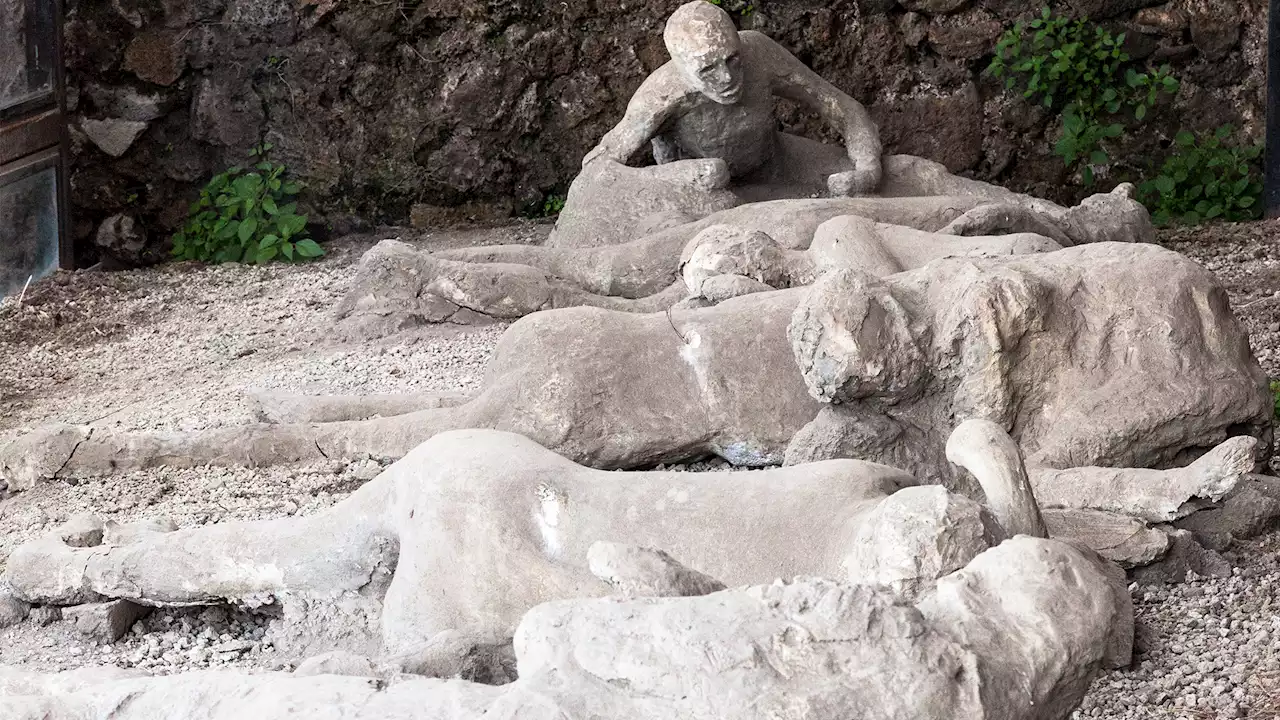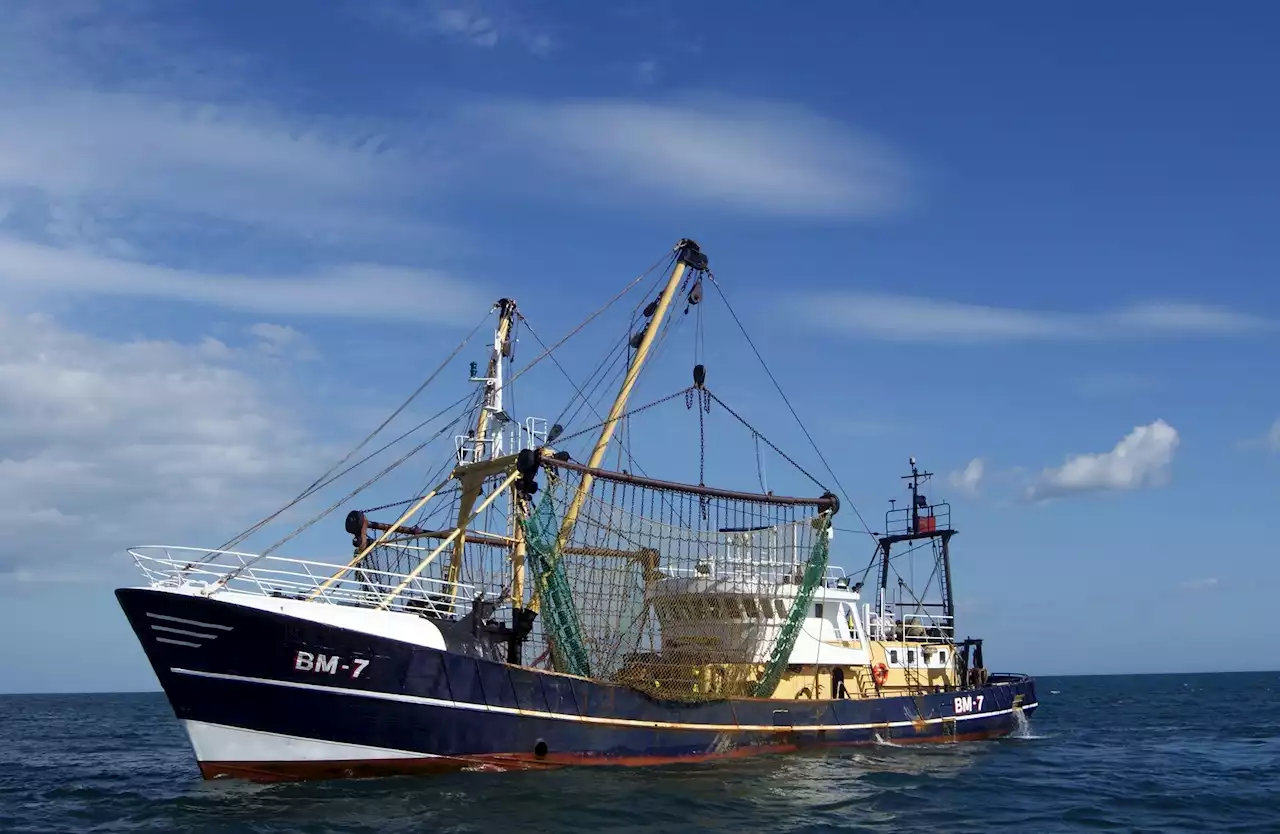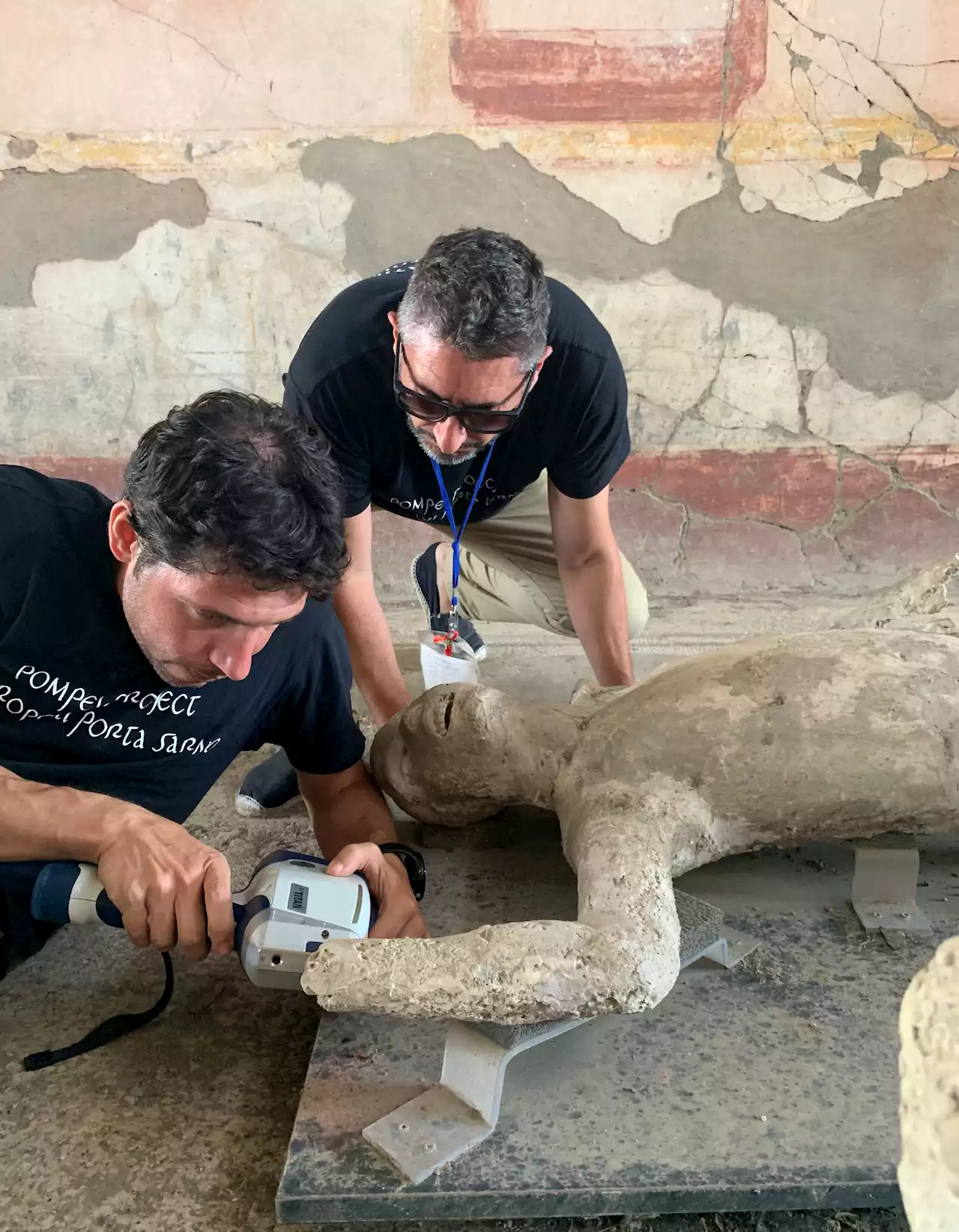A multi-institutional team of archaeologists, chemists and environmental scientists using portable X-ray fluorescence on victims of the Pompeii eruption in 79 AD finds that they likely died of asphyxiation. The group has published their results in PLOS ONE.
Dr. Gianni Gallello measuring Cast #57 by pXRF, together with Dr. Llorenç Alapon at Pompeii Archaeological Park. Credit: Alapont et al, CC-BY 4.0
A multi-institutional team of archaeologists, chemists and environmental scientists using portable X-ray fluorescence on victims of the Pompeii eruption in 79 AD finds that they likely died of asphyxiation. The group has published their results inIn 79 AD, Mount Vesuvius famously erupted, covering the nearby Roman-era city of Pompeii with ash, pumice and other debris, killing thousands of the people who lived there. Over many years, the city has been excavated, revealing their remains.
Many of the people of Pompeii were buried by the volcanic material raining down on them. Over time, as the bodies decomposed in the quickly hardening ash, a void formed in the original shape of the dead body. In the 1800s, several archaeologists got the idea to fill the voids with plaster and after it hardened, to remove the ash—that left plaster figures shaped liked the people who had died.
Prior nondestructive testing of such casts showed that the bones of the dead person were hidden within them. Prior research has also suggested that interactions between the bones and the plaster likely led to contamination, making it difficult to reach any conclusions by studying them.
Brasil Últimas Notícias, Brasil Manchetes
Similar News:Você também pode ler notícias semelhantes a esta que coletamos de outras fontes de notícias.
 Five Fascinating Pompeii Finds Since Mount Vesuvius EruptedFrom human remains to ancient brothels, Pompeii is a vast archaeological expanse that depicts the lives of the ancient people who lived there.
Five Fascinating Pompeii Finds Since Mount Vesuvius EruptedFrom human remains to ancient brothels, Pompeii is a vast archaeological expanse that depicts the lives of the ancient people who lived there.
Consulte Mais informação »
 Pompeii's archaeological puzzles can be solved with a little help from chemistryA new study looks at the effects of plaster on the preserved remains of the Roman city that was wiped out by Mount Vesuvius.
Pompeii's archaeological puzzles can be solved with a little help from chemistryA new study looks at the effects of plaster on the preserved remains of the Roman city that was wiped out by Mount Vesuvius.
Consulte Mais informação »
 X-Ray Analysis of Pompeii Victims’ Bones Suggest They Suffocated to DeathChemical analysis of the 2,000-year-old remains was manageable despite contamination of the remains from plaster casts.
X-Ray Analysis of Pompeii Victims’ Bones Suggest They Suffocated to DeathChemical analysis of the 2,000-year-old remains was manageable despite contamination of the remains from plaster casts.
Consulte Mais informação »
 The Y chromosome’s genetic puzzle is finally completeNew analyses of the human Y chromosome reveal millions of new bases and different locations for the same gene in different people.
The Y chromosome’s genetic puzzle is finally completeNew analyses of the human Y chromosome reveal millions of new bases and different locations for the same gene in different people.
Consulte Mais informação »
 Sperm and northern bottlenose whales observed swimming behind deep-sea trawler net to feed on escaping fishSperm and northern bottlenose whales were frequently observed following a trawler off the coast of Newfoundland to feed on fish escaping from the net as it was hauled in, according to a study published August 23, 2023 in the open-access journal PLOS ONE by Usua Oyarbide from Plentzia Marine Station–Univ Basque Country, Spain, and colleagues.
Sperm and northern bottlenose whales observed swimming behind deep-sea trawler net to feed on escaping fishSperm and northern bottlenose whales were frequently observed following a trawler off the coast of Newfoundland to feed on fish escaping from the net as it was hauled in, according to a study published August 23, 2023 in the open-access journal PLOS ONE by Usua Oyarbide from Plentzia Marine Station–Univ Basque Country, Spain, and colleagues.
Consulte Mais informação »
